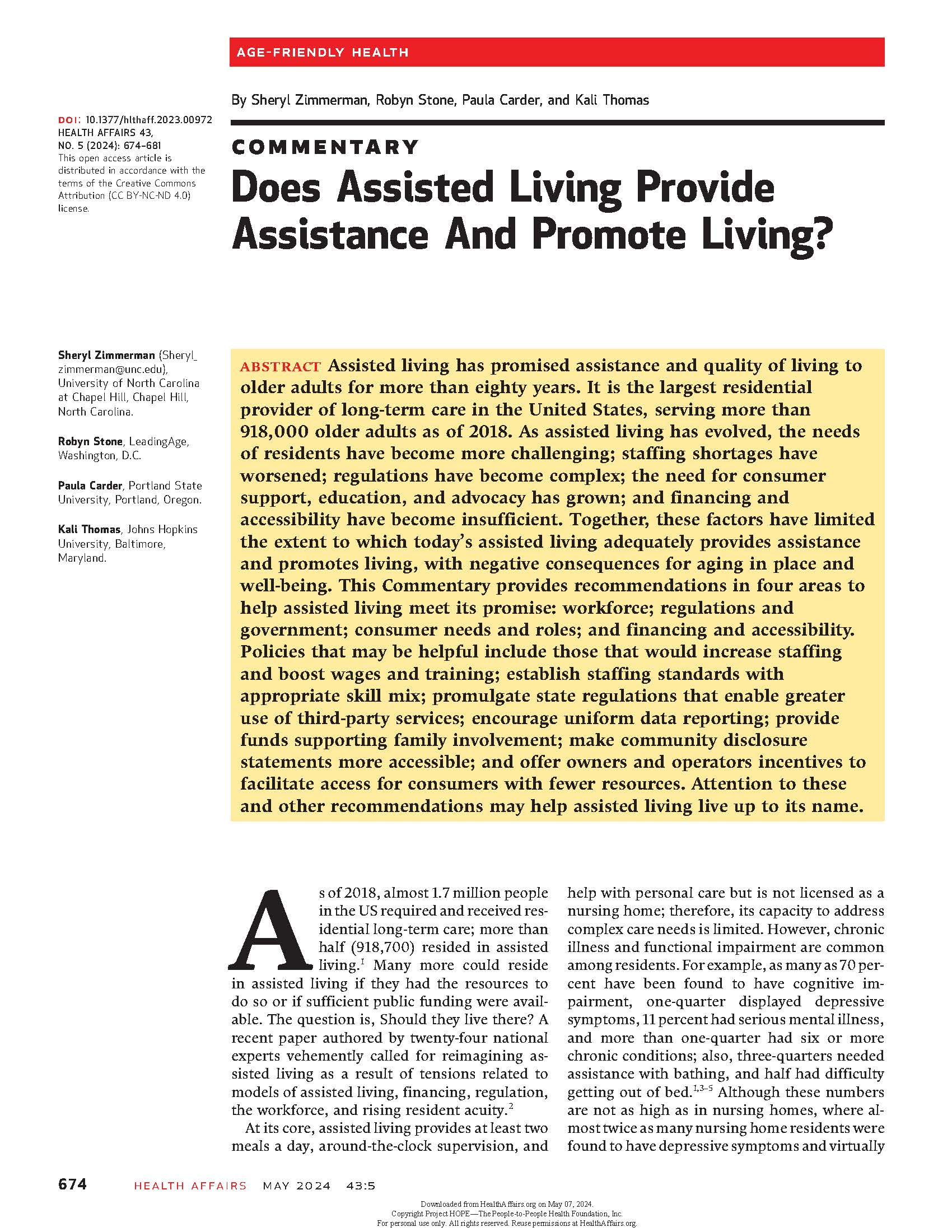WHAT THIS MEANS FOR YOU: Using Medicare data from 2018, data from over 255,000 people across 24,000 assisted living communities found differences in health outcomes based on race/ethnicity and dual eligibility, including hospital admissions, emergency room (ER) visits, and nursing home placements. For instance, Black and Hispanic residents had lower proportions of ER visits than their white counterparts, but Hispanic residents had higher 30-day readmission rates. Dual eligibility negatively impacted these outcomes more than race/ethnicity alone.
Medical Care and Research Review
State Medicaid Financing and Access to Large Assisted Living Settings for Medicare–Medicaid Dual-Eligibles
State Medicaid Financing and Access to Large Assisted Living Settings for Medicare–Medicaid Dual-Eligibles
WHAT THIS MEANS FOR YOU: This study examined two groups of Medicare beneficiaries residing in large (25+ beds) AL communities in 2014: dual Medicare and Medicaid beneficiaries, and Medicare-only beneficiaries. Among 506,193 beneficiaries, 18% were dually eligible; they tended to be younger, minority, and have more chronic health conditions. The share of dual-eligibles by state varied widely; states with Medicaid financing for AL had more dual-eligibles, but variation in state room and board regulations did not have a significant relationship to dual-eligible rates.


